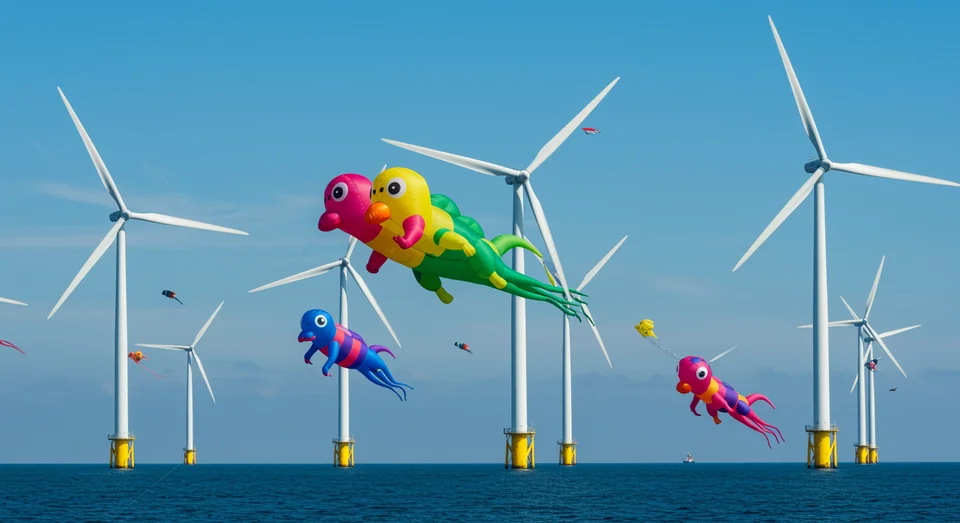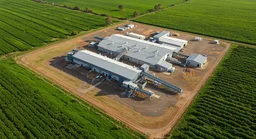University of Maltas ParaWIND Project: Inflatable Kites Revolutionize Wind Energy Efficiency
25 views
Harnessing the winds that sweep across the seas has long been a cornerstone of renewable energy innovation, yet the inherent unpredictability of wind patterns and the vast spatial demands of turbine arrays have posed formidable challenges. Researchers at the University of Malta, however, are setting their sights on a transformative solution with the ParaWIND project—an initiative that could rewrite the rules of wind energy production by employing inflatable kites to redirect high-altitude winds, promising to unlock untapped efficiency without expanding infrastructure footprints.
Inflatable Kites: A High-Flying Answer to Wind Energy’s Challenges
At its heart, ParaWIND is a daring marriage of aerodynamics and engineering ingenuity. Traditional wind farms, whether onshore or offshore, face the dilemma of spacing turbines far apart to mitigate aerodynamic wake losses—an inefficiency that arises when upstream turbines disrupt the airflow for those downstream. This spatial necessity not only limits the energy yield but also demands extensive land or sea areas, complicating the expansion of renewable energy infrastructure. Enter ParaWIND, a concept that seeks to defy these limitations by taking to the skies.

The project’s centerpiece is the use of inflatable kites, or parafoils, designed to capture high-altitude winds and channel them downward toward the turbines below. High-altitude winds are not only stronger but also more consistent, presenting an untapped reservoir of renewable energy. By redirecting these currents, ParaWIND aims to boost the energy yield of existing wind farms without the need for additional turbines or expanded sites. The inflatable kites, lightweight and maneuverable, offer a cost-effective alternative to traditional methods of increasing wind farm capacity.
To bring this vision to life, researchers are relying on advanced computational fluid dynamics (CFD) modeling—a sophisticated tool that simulates airflow interactions and optimizes the placement and operation of parafoils in tandem with turbines. These simulations allow scientists to fine-tune the design and deployment of the kites, ensuring maximum efficiency while minimizing potential disruptions to turbine performance. The beauty of this approach lies in its adaptability; ParaWIND could be integrated into existing wind farms, offering a scalable solution to one of renewable energy’s most persistent hurdles.
A Turning Point for Offshore Wind Energy
While the ParaWIND project holds promise for all wind farms, its implications are particularly profound for offshore wind energy. Offshore turbines, often located in regions with stronger and steadier winds, already benefit from favorable conditions, yet they face steep costs due to the complexities of installation and maintenance in marine environments. By increasing the efficiency of these turbines through kite-assisted airflow optimization, ParaWIND could significantly lower operational expenses and improve the economic viability of offshore wind farms.
Moreover, the sustainability aspect cannot be overlooked. Inflatable kites require minimal materials and energy to manufacture compared to the steel-intensive construction of additional turbines. By enabling wind farms to achieve higher energy yields without expanding their physical footprint, ParaWIND aligns seamlessly with global efforts to reduce the environmental impact of renewable energy infrastructure. This innovation could prove invaluable as nations strive to meet ambitious climate targets while balancing ecological preservation.
The potential ripple effects extend beyond energy production. If ParaWIND succeeds in demonstrating its efficacy, it could pave the way for further exploration into airborne wind energy systems, a field that has long been overshadowed by traditional turbine technology. The concept of harnessing high-altitude winds through lightweight, adaptable mechanisms could inspire new approaches to renewable energy, broadening the horizons of what is possible in the quest for sustainability.
A Glimpse into the Future
As the ParaWIND project progresses, its success could herald a paradigm shift in how we approach wind energy. The inflatable kites are not merely a technical innovation; they represent a broader vision of maximizing efficiency and minimizing waste within the renewable energy sector. This ethos is increasingly critical as the world races to transition away from fossil fuels and toward cleaner, more sustainable power sources.
The stakes are high, but so too is the promise. Should the researchers at the University of Malta succeed in their endeavor, ParaWIND could emerge as a beacon of ingenuity, demonstrating that even the most persistent challenges can be overcome with creativity and collaboration. In the ever-evolving landscape of renewable energy, the winds of change may soon blow stronger than ever—guided, quite literally, by kites soaring high above the seas.








